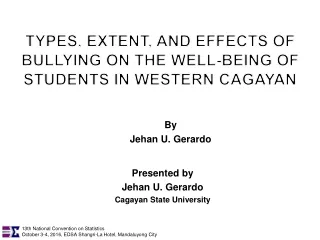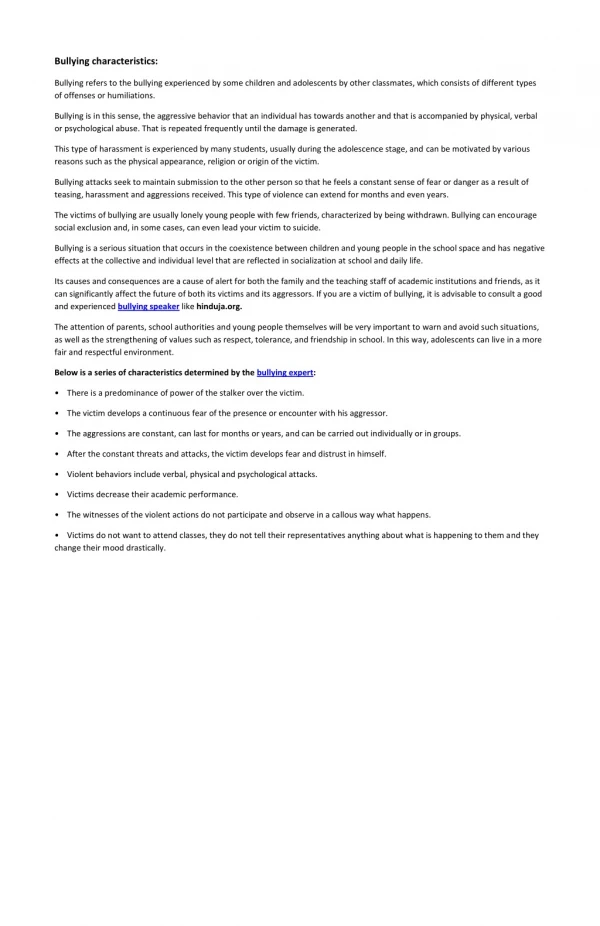Workplace bullying in the UEP system basis for an intervention program
This study determined the awareness of and experiences on workplace bullying of the faculty members in the University of Eastern Philippines system. It involved all the colleges of the University main campus and the satellite campuses of UEP-Laoang and UEP-Catubig. The data gathered were analyzed and interpreted using appropriate statistical tools. Frequency counts and percentages were used to present the profile of the respondents as well as the level of awareness on workplace bullying, school-based efforts to address bullying, and the extent of workplace bullying experienced by the respondents. Pearson r correlation was used to establish a-priori the relationships among the main variables. The awareness on workplace bullying among respondents were determined. There were three categories identified, namely: construct of bullying, common factors that trigger bullying, and effects of bullying on teachers. As to the common factors that trigger bullying, most respondents were much aware that bullies view their victims as a direct threat and bully them in an attempt to prevent their own inadequacies being revealed to other colleagues and supervisors. Bullying is motivated by the insecurities and inadequacies of the bully, so any colleague who, unwittingly, threatens to highlight or expose those failings is a potential target. Most respondents were aware of the effects of bullying including greater absenteeism and lower quality teaching performance and decreased motivation and morale; victims spend much of their time trying to gain support and defend themselves from the bullying. In the UEP system, one of the most common bullying forms is verbal bullying. Verbal bullying often includes name calling, spreading rumors, and persistent teaching. Another popular form of bullying is emotional intimidation. In this form, a bully may deliberately exclude one from a group activity such as a party or school outing. Covert bullying or indirect bullying is also practiced to some extent in the university. It is sometimes hard to spot as the person involved is not normally aware of the harassment done. One example of verbal bullying is spreading rumors or made-up stories to harm others. Other scenario is divulging secrets, mimicking, and damaging one’s reputation. Making gestures and faces behind a person back is also a form of indirect bullying. In a male-dominated college, one faculty cried foul about the bullying activities he experienced. In the interview he said that neophyte faculty is usually the victim of bullying. As to the extent of bullying experienced by the respondents, most of the faculty-respondents have not encountered serious bullying from other faculty. It means that most of the respondents did not encounter bullying in the three campuses of UEP system. Responses on school-based efforts to address bullying indicate that job descriptions of the employees are clearly defined. This is one way to prevent misunderstanding about their roles in the organization. Besides, most respondents agree that workplace bullying is not an accepted behavior at the campus. They understand that workplace bullying is an occupational hazard and unacceptable.
★
★
★
★
★
246 views • 23 slides


